Chef Eric Says: You’ll WOW with this Christmas Goose

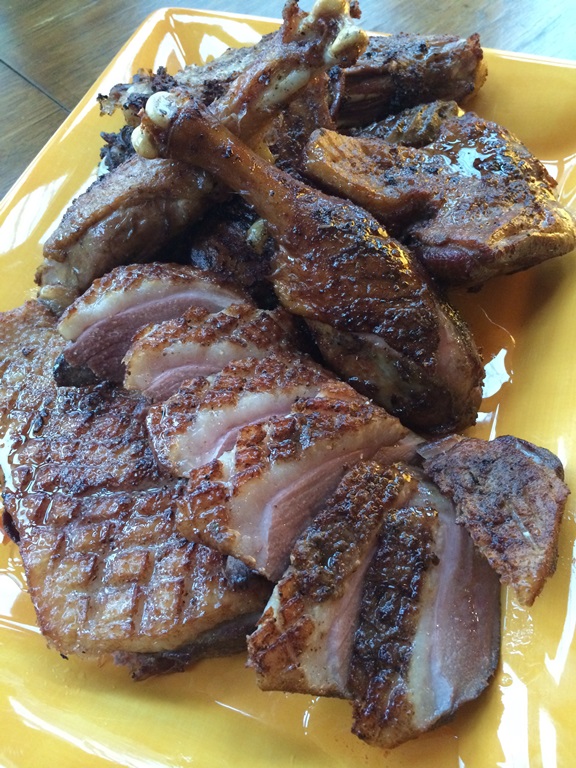
A Christmas Goose with A Spiced Maple & Citrus Rub
PREP TIME: 45 minutes | COOK TIME: 24 hours
Whether goose is part of your holiday menus or not – it wants to be! As geese hatch in the spring it’s ready to eat at 8 to 9 months of age meaning it’s ready for your belly right around the holidays!
Sticker shock can set in at the market where you generally will find an average young bird between 10-12 pounds selling for around $40-50 but let me tell you, VacMaster’s, it’s money well spent!
Not only will you be feasting on a truly delicious and perfectly cooked bird but, properly butchered and using cutting edge culinary tech afforded to us by food vacuum packaging and sous vide, you also get pounds of snowy white goose fat and a few quarts of dark rich goose stock for making a lovely and robust goose gravy.
A few things to watch for while working with a goose especially for the first time:
- Hunters in the know refer to the bird as the roast beef of the skies and in France a boneless goose breast is called a magret or goose steak.
- Cooked anywhere from a rosy rare to well-done the meaty flesh is earthy, dense, rich and ridiculously tasty – goose satisfies carnivores like prime beef.
- Due to the nature of the bird geese store quite a bit of fat for all sorts of reasons but, when It comes down to it, the actual flesh is quite lean which makes it easier for the cook to harvest all of those luscious lipids.
- Goose also has the softest fat in its category of animal. Goose fat turns to liquid at 111°F compared to a similar tasty treat, the duck, who’s fat liquefies at 126°F.
So what’s the point of that little gastronomic gem? Well, first it makes it much easier to cook with and far easier to consume. As most people know, fat is an essential part of any balanced diet. It provides the body with specific vitamins which are essential for growth and contains essential fatty acids which are important in maintaining normal health and body functions. That all being said, animal fats are often considered to be “bad fats” yet goose fat contains far fewer saturated fats than butter or lard.
Surprisingly enough goose fat is also high in ‘heart healthy’ monounsaturated and polyunsaturated fats, as well as, rich in Oleic acid which can lower blood cholesterol levels.
If you really don’t care about all of that nutritional mumbo-jumbo it just tastes amazing! I urge all of you VacMaster’s out there to try some or all of the recipes associated with our Christmas Goose this holiday season – you won’t be disappointed.
Ingredients:
1 10-12 pound goose, thawed
1/4 cup spiced maple citrus rub
1/2 cup rendered goose fat, or duck or lard
Directions:
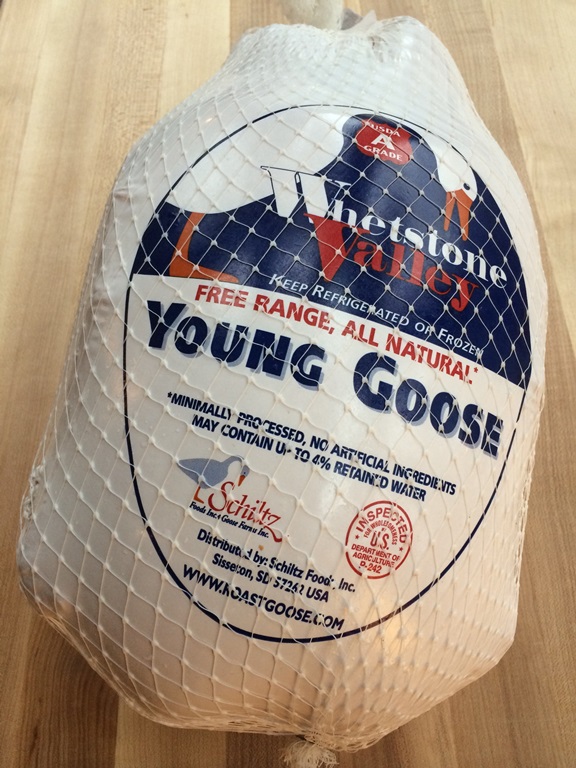
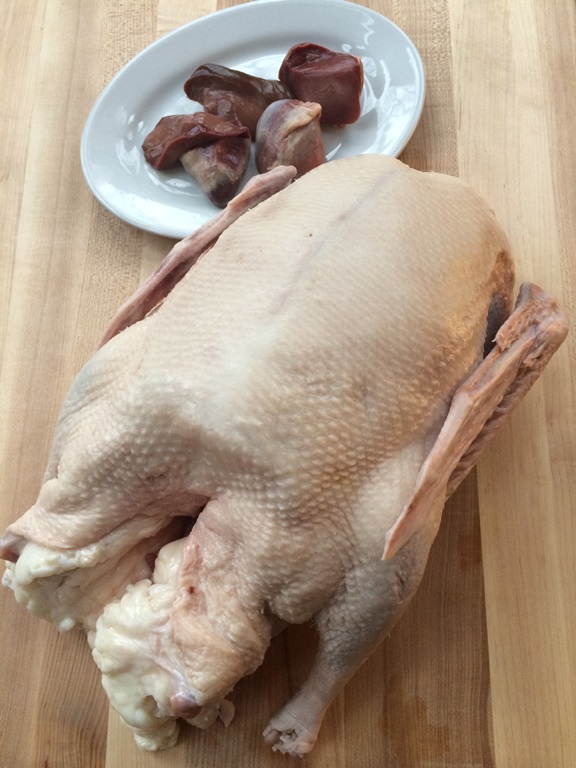
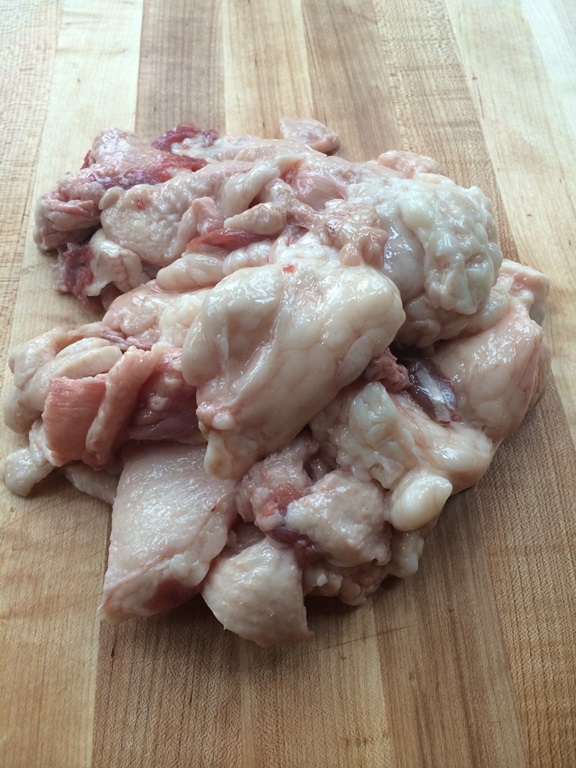
Remove the goose from its packaging and rinse thoroughly under cold running water, dry well.
Remove the neck and any other giblets, reserve for goose stock (see recipe) also remove any large fat deposits and reserve for rendered goose fat (see recipe).
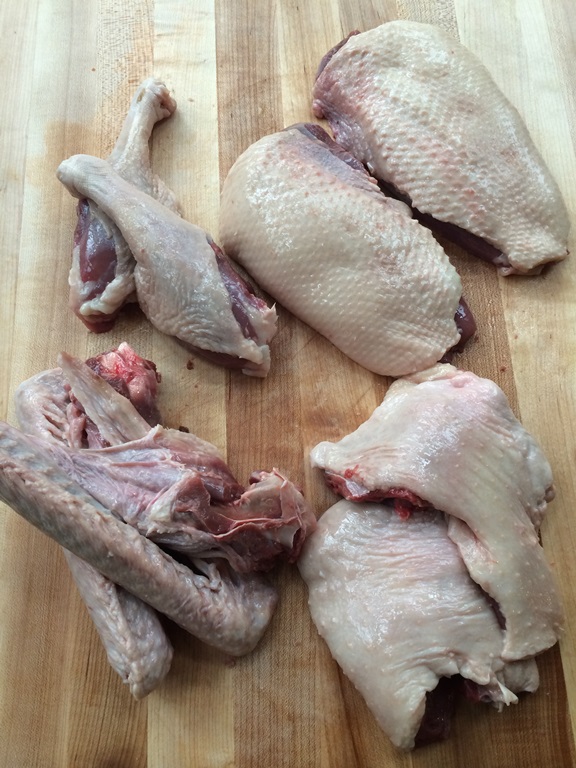
Lay the goose, breast-side up, on a clean cutting board. Locate the natural seam where the thigh separates from the body cavity and make a slit – do this on both sides of the bird.
Reach underneath the thigh and pop the joint where the thigh meets the body. Flip the goose over and cut through that joint, being sure to angle your knife towards the body cavity, scoop underneath so that you get the goose “oyster” (a rather good sized nugget of tender goose meat hidden on the back of the bird). Repeat this on the other side.
There is a natural seam of fat the runs in between the leg and the thigh bone. Run your knife along that line of fat and down through the joint to separate the leg from the thigh.
With the goose still laying breast-side down, locate the joint where the wing meets the body cavity, and pop the joint, just like you did with the thigh bone. Cut through to release the wing. Repeat this on the other side.
Flip the goose back over and run your finger along the center of the breast — you will feel the breast bone separating the breast into two halves. Run your knife along either side of this bone, keeping the knife as close to it as possible, and peel the breast back, sliding your knife underneath it and along the body cavity as you go, until the breast is free. Repeat this on the other side.
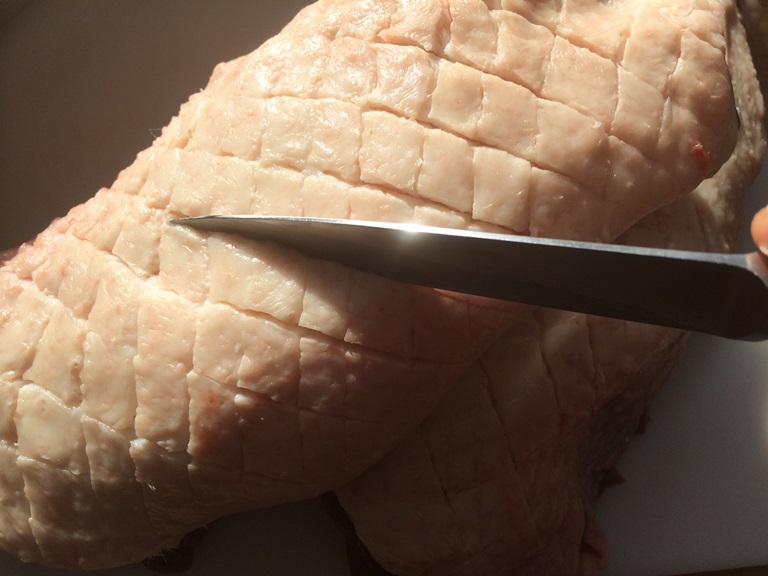
Now that all of the primary goose pieces are portioned, clean up each piece by trimming or removing any extra skin and/or fat and reserve for rendering. Reserve the carcass with the neck and giblets for goose stock.
With a sharp thin bladed knife gently score the skin of the breasts at a 45 degree angle in a crosshatch or diamond pattern being careful to cut only through the fat not into the flesh. Repeat with remaining pieces.
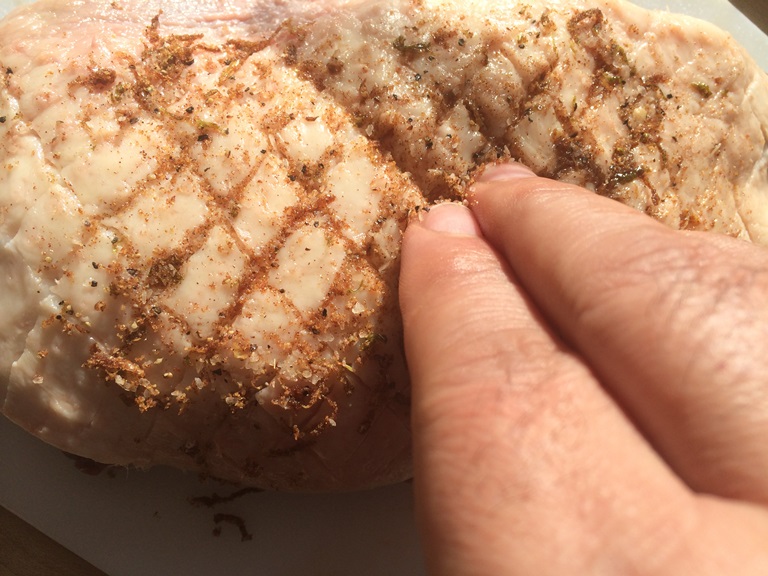
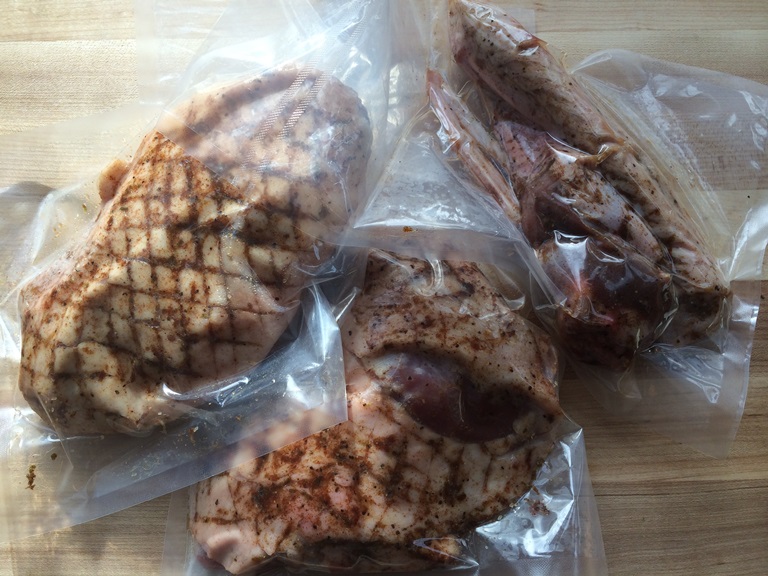
Using the tips of your fingers gently massage the spiced maple citrus rub into the skin paying particular attention to scored skin flip over and rub the flesh side as well. Repeat with remaining pieces.
Divide the goose among three vacuum pouches (one for breasts, one for thigh/legs and one for wings). Place the rubbed goose pieces in their respective bags, vacuum seal and refrigerate.
Fill and preheat your sous vide container or stock pot with water (according specifications) to 143.6°F using your VacMaster SV1.
Add the goose thighs/legs and cook for 18 hours. (If you’re not serving the goose immediately, remove the bag and chill thoroughly in an ice bath. Refrigerate until ready to serve.)
Preheat a second sous vide container or stock pot with water to 129.2°F (or continue with the recipe the following day).
Add the goose breasts and cook for 6 hours. (If you’re not serving the goose immediately, remove the bag and chill thoroughly in an ice bath. Refrigerate until ready to serve.)
Remove the goose from the vacuum pouches and add the remaining goose fat to a non-stick skillet.
Over medium high heat, and working a few pieces at a time (depending on the size of your skillet), sear the legs skin-side-down for about 1 minute or until golden brown. Flip and fry for an additional minute skin-side-up. Repeat with the thighs and the wings.
Fry the breasts, skin-side-down only, for about 1 minute or until the skin is golden brown.Place the browned legs, thighs and wings on a large serving platter. Place the breasts skin side up on a cutting board and slice at a slight angle in medium thin pieces. Shingle the sliced breasts on the platter along with the rest of the goose.Serve immediately.
Enjoy and Happy Cooking!
